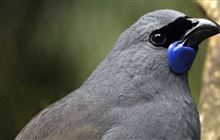Kahurangi Battle for our Birds pest control completed
Archived content: This media release was accurate on the date of publication.
Introduction
DOC's Battle for our Birds aerial 1080 pest control in western Kahurangi National Park has been completed, making the area’s at-risk native wildlife safer from predators.Date: 20 November 2017
The pest control covered approximately 39,700 hectares including the coastal strip between Kohaihai and Big River and the Heaphy River catchment.
The pest control was needed to protect vulnerable populations of great spotted kiwi, whio, kea, kākā, Powelliphanta snails and long-tailed bats.
Monitoring had shown rat numbers were high in the area. Beech seed fall, known as a mast, has provided more food for rodents, fuelling their breeding. With more rodents to feed on, stoat numbers also increase.
The pest control targeted rats and also reduces stoat numbers through stoats eating poisoned rodent carcasses.
DOC had initially earlier this year planned for aerial 1080 predator control over approximately 171,000 hectares of the park and adjoining conservation land. It was reduced to 39,700 hectares after monitoring showed rat numbers had not reached levels requiring control in much of the planned operational area.
DOC Buller Operations Manager Bob Dickson said the predator control was timed to prevent increased predator attacks on nesting native birds so more chicks survive to increase their populations.
“We have been monitoring rock wren and kea in Kahurangi to measure the effects of Battle for our Birds pest control on these species. The monitoring has found kea and rock wren have higher nesting success after aerial 1080 predator control.” (See detailed results below).
Background
Kea monitoring results:
- In the 2015 and 2016 breeding seasons, on average 50% of monitored kea nests successfully produced young kea. This followed aerial 1080 predator control in 2014 and 2016.
- This compares to only 2% of monitored kea nests being successful between 2009 and 2014 in park areas where there was no pest control.
Rock wren monitoring:
- In rock wren monitoring from 2014 to early this year, 58% of monitored rock wren nests produced young after 1080 pest control took place and 45% in the following breeding season. But where there was no pest control, just 13% of nests were successful
- In 1080-treated areas, just 7% of monitored rock wren nests were lost to predation after the pest control and 42% a year later. Where there was no pest control, 86% of nests were preyed on.
Contact
For media enquiries contact:
Email: media@doc.govt.nz

